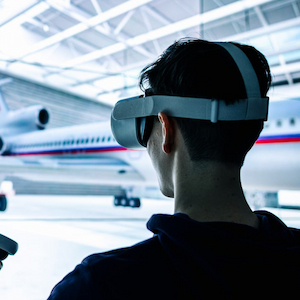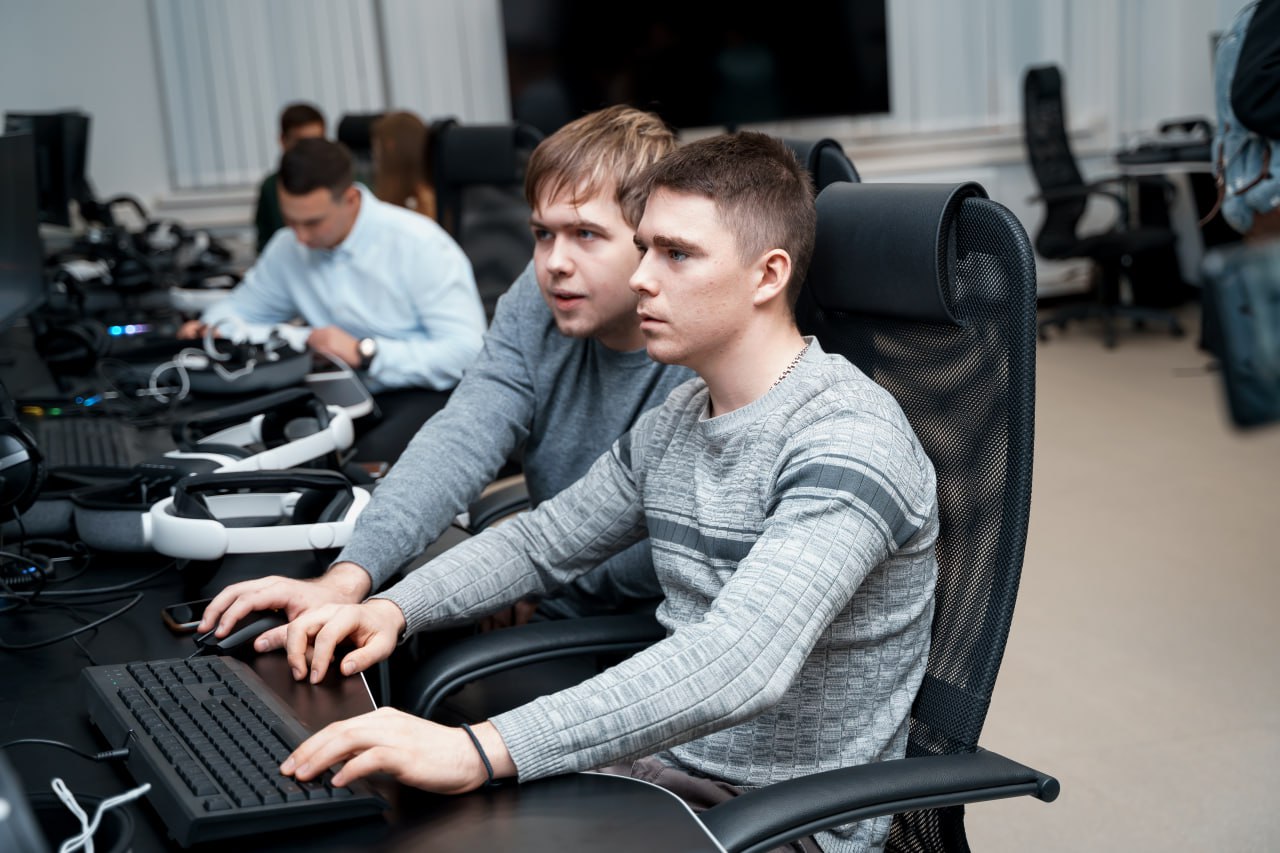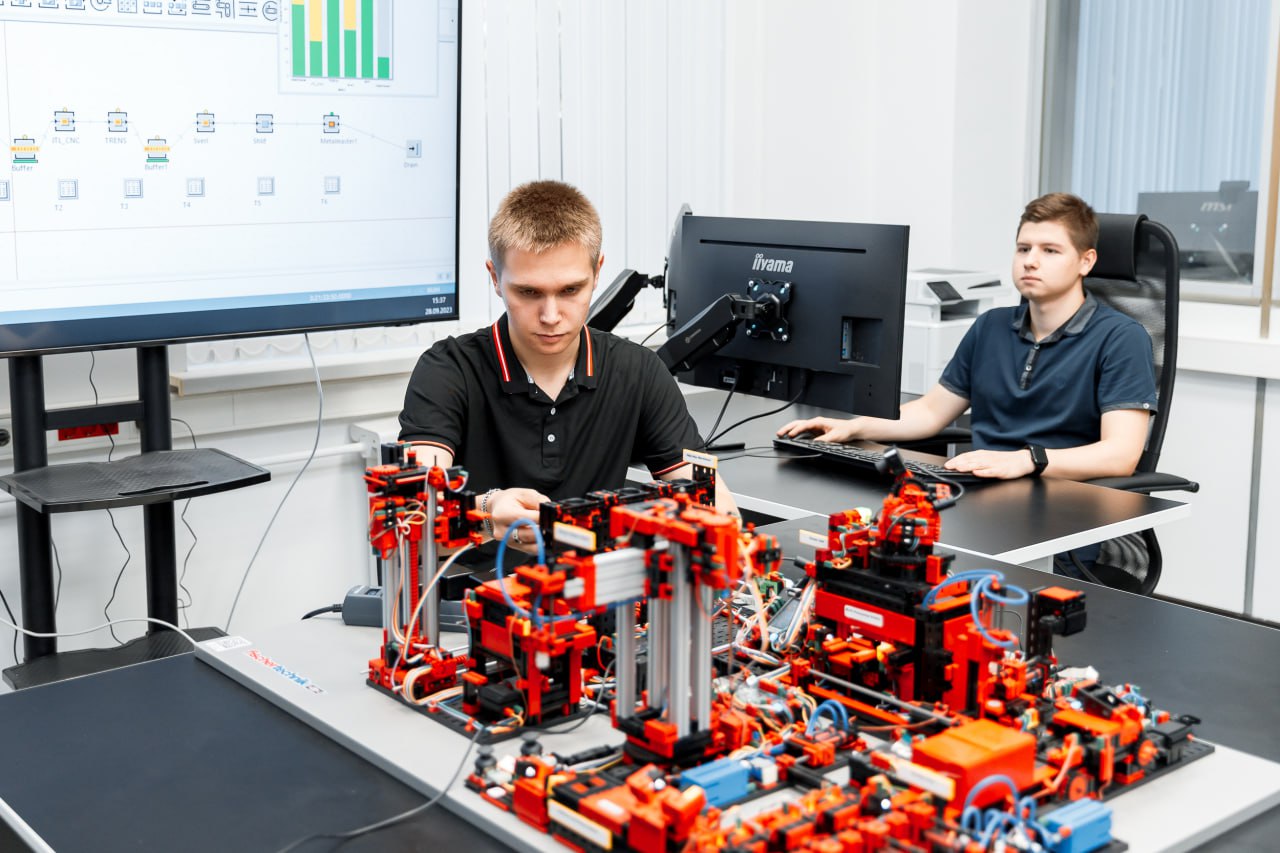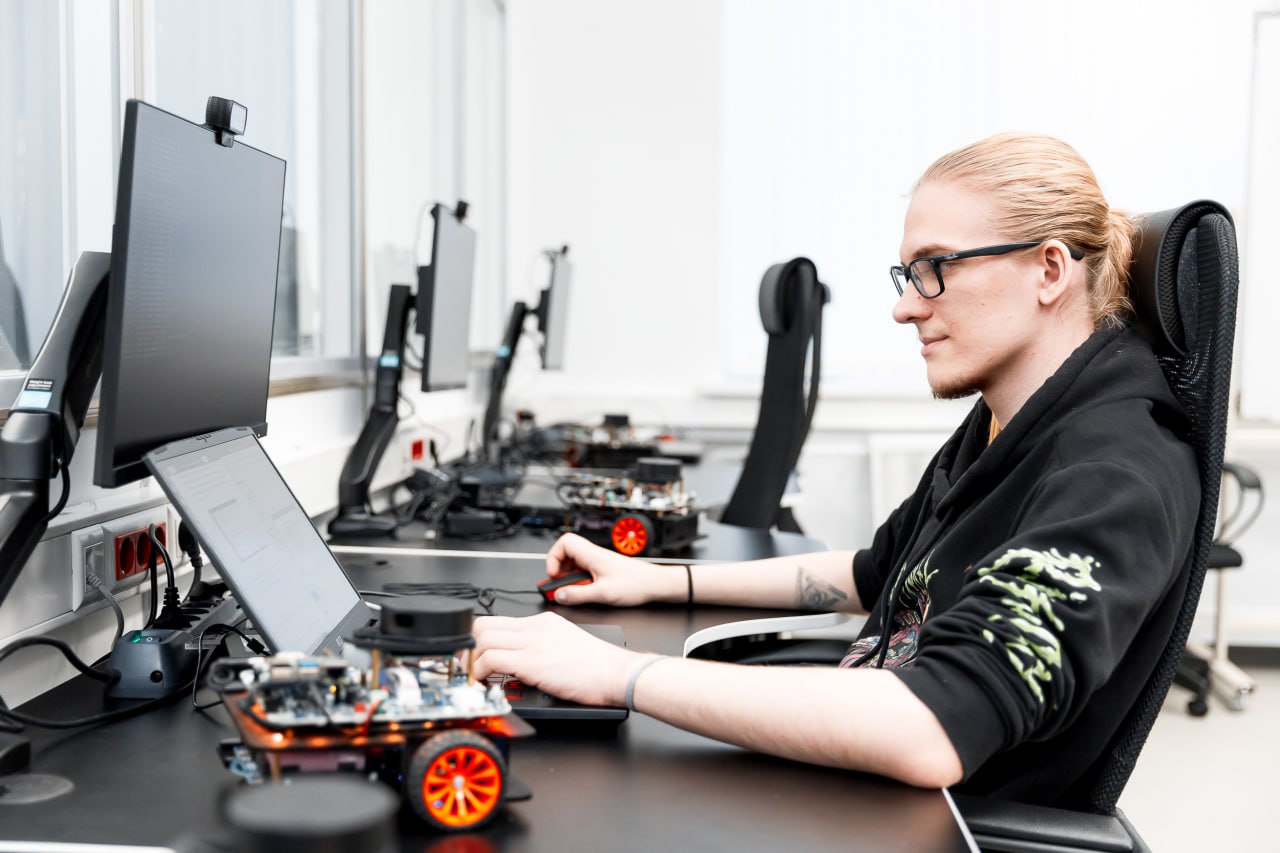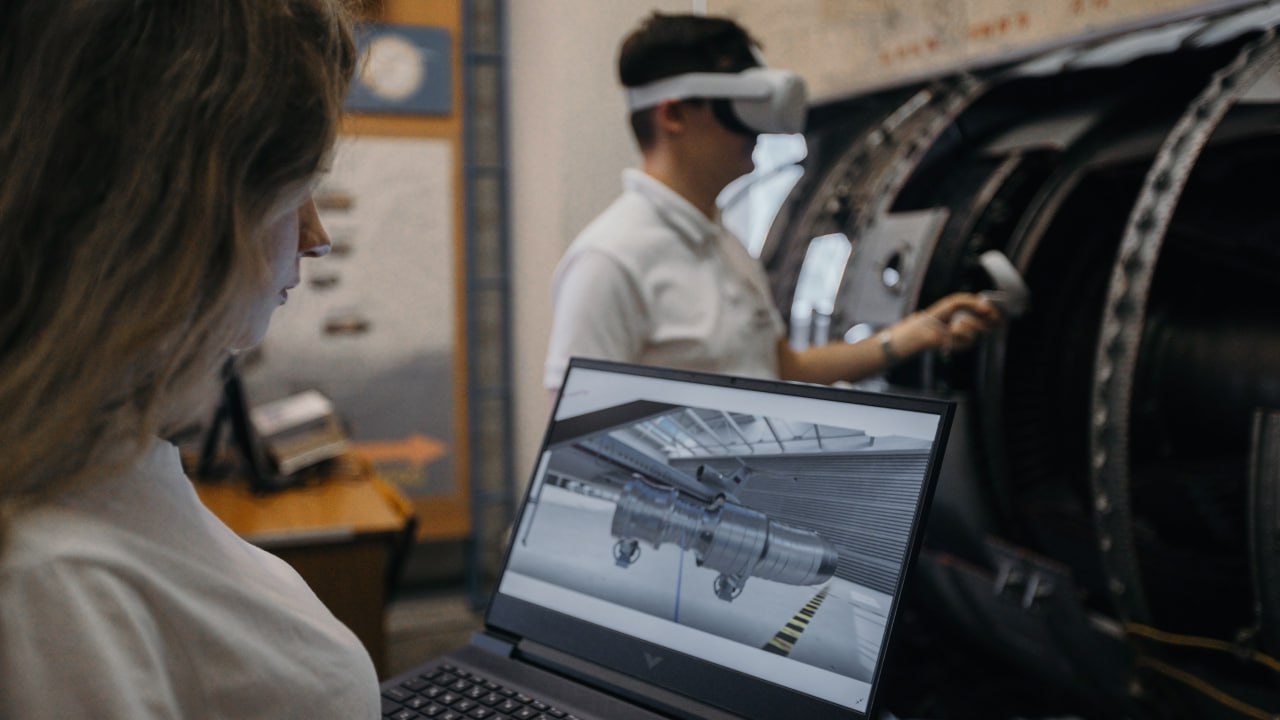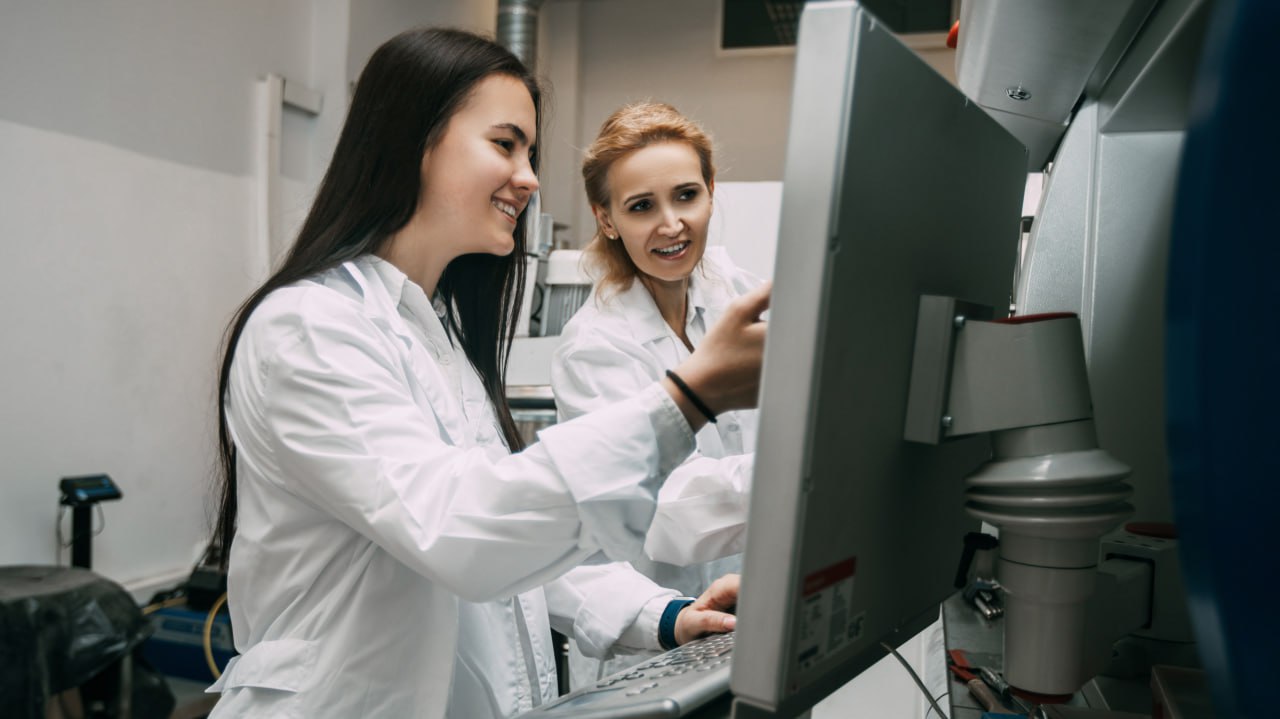Shaking Up the Classics
The Advanced Engineering Schools Federal Project was developed by the Russia’s Ministry of Education and Science to become a part of the Scientific and Technological Development of the Russian Federation State Program. The purpose of the project is to provide highly-qualified staff for critical economy sectors for the country to achieve technological independence.
The Russian universities sent more than 80 applications. In June 2022, the Samara University qualified to be entitled as one of the first 30 participants of the federal educational project.
Nowadays AAES’s activities cover such areas as aviation and space-rocket engineering, propulsion engineering, artificial intelligence, advanced digital and industrial technologies.
The school had been initially expected to provide at least 15 new educational programs, to get at least 1,300 graduates of AAES employed at aerospace enterprises, to feature at least 15 new modern educational spaces and two pilot and experimental manufacturing sites by 2030. However, even nowadays it can be said without prejudice that these expectations will be exceeded.
Over a year of its existence, the School managed not only to bring together talented and ambitious students and their mentors, but also to make a name for itself as an advanced venue where engineers of a new sort are trained to master knowledge intensive and multidisciplinary technologies.
Until recently, the University had provided a classical engineering education. Therefore, the school’s founders understood that they were to launch a brand new model of educational process organization.
“Our University provides immense support to the engineering competencies and traditions of the aerospace industry,” Ivan Tkachenko, Deputy Rector of the Samara University and AAES Director, shares. “That said, we can see a large number of new trends in today’s technical and engineering education. Now there’s a need to shake the classical engineering education in this area up, to get a new take on it, all the more so as it shows rapid growth both in our country and abroad. As soon as it became necessary, we started looking into it.”
Industrial Pool
Samara still keeps the status of a space capital of Russia.“The global aerospace industry moves forward in leaps and bounds. The Samara Region has all the opportunities for its development,” Tkachenko notes.
Another proof of the industry’s development in the region is that young specialists are constantly sought after by the largest companies.
“Representatives of the most different professions are required, such as engineers, developers and working people. Young people choose this path, since making rockets, spacecrafts and aviation equipment, storming the sky and the space are great things to do,” Dmitry Azarov, the Governor of the Samara Region, said during his visit to the Progress Rocket Space Centre.
Science and manufacturing are linked together due to successful efforts of Engineering of the Future REC and other educational centers of the region along with the advanced engineering school. The more so as the partnership between universities and high-technology companies is mandatory for participants of the Federal Project.
AAES works hand in hand with the main employers — leading enterprises of the region and design bureaus under the terms of co-financing. These include Progress Rocket Space Centre JSC (a part of the Roscosmos State Corporation), UEC-Kuznetsov PJSC (a part of the Rostec’s United Engine Corporation), UEC JSC, Aviacor Aviation Plant JSC.
As long as the School develops, the number of industrial partners grows. According to Ivan Tkachenko, the School Council includes enterprises that have neither signed partnership agreements nor participated in co-financing yet, but still need engineers — School's graduates — and are interested in the results of the School’s scientific researches. He assured that their interests would also be taken into account when creating educational programs and research-and-development agenda.
Besides, the process of the project’s implementation is closely monitored by other large players of the industrial market, such as Rosatom State Atomiс Energy Corporation, for example. The negotiations are held for the company to be included in the list of the school’s partners, the more so as the University’s alumni have been long sought by the State Corporation’s enterprises.
Fresh Off the Boat
In the Advance Engineering School specialists are trained in accordance with the employers’ certain requests. The alumni are waited for, which, according to Ivan Tkachenko, is what the program is aimed at. When the Federal Project on the School’s establishment was launched, the main idea behind it was to make a difference, so that after graduation young specialists could come to work without hearing the typical phrase: “Forget everything you studied in the university, we’ll teach you anew.” The reduction of the adjustment period (and its elimination in an ideal scenario) is the shared foundation of all advanced engineering schools. The Head of AAES considers genuine project-based learning and involvement of the enterprises into the educational process critical conditions for achievement of this goal.
The modern requirements to the young engineers are much more extensive than 5–10 years ago. According to the employers, a perfect graduated engineer is a top-of-the-line specialist of the highest caliber. They can do manual work, design and program; they are able to solder plates and make controllers themselves, and to use things of their own making. However, aside from a set of competencies, it’s personality and logical thinking that matter.
“We expect the alumni of the school to be able to cover all the production’s lifecycle. They should be able not to work at the design and development stages only, but to ensure the follow-up for the manufacturing process, to be involved in production, exploitation and post-service,” AAES Director emphasizes.
As for the IT component, the School was based on three institutes — those of aviation and space-rocket engineering, engines and power facilities, informatics and cybernetics. That is why this kind of competencies is integrated into all the educational programs. A standard example is an educational program called Artificial Intelligence in Propulsion Engineering.
Get Digital
A vital component of the Advanced Engineering School is digital plants.
According to Ivan Tkachenko, the Federal Project provides for such a format as cyberphysical factories. It is a new term which, as he claims, needs to be conceptualized and defined further.
“It can be fully applied to our Engineering School, because it is based on the concept of a digital plant — it’s about everything related to manufacturing digitalization, robotization, automation and, as a result to the increased volume and quality of products,” the Director of the School notes.
A new type of manufacturing differs radically from the belated view of a plant. The goal of the school is to upscale the new format as much as possible and let the graduates adjust to it.
“Our task is not just to maintain robots, it’s not what we train our specialists for,” Tkachenko thinks. “This School prepares engineers that will be able to create manufacturing systems and new machinery.”
What Is the Outcome?
The School’s alumni intend to locate three types of objects at digital plants: small-sized gas-turbine engines, small spacecrafts, unmanned aerial vehicles and airplanes of the regional aviation.
“The School is involved in development of the Ladoga turbo-propeller regional airplane at the Aviacor Plant,” Tkachenko shares. “It’s a traditional field for Samara, one we would like to support and develop.”
Satellites of the AIST series is a joint project of the University and Progress Rocket Space Centre. The agenda includes extension of a spacecraft nomenclature based on new tasks, radar-location monitoring in particular. Ivan Tkachenko notes that considering the tasks regarding the expansion of a satellite constellation set for the academic community by the country’s government, these devices are extremely relevant.
A promising field for the engineers of the School is unmanned aerial vehicles. According to Tkachenko, the Russian manufacturers have all the chances to take their niche.
“We won’t be able to overcome the competitors currently offered by the Asian market at once. We have more knowledge intensive tasks, such as monitoring of the atmosphere and emergencies, urban planning, freight traffic, and carbonic-related matters. It is a new, different niche for us, not the playthings the market is filled with; it’s not our focus. We focus on different products with a high added value achieved through installation of useful loads we develop ourselves on UAVs.
Selection of the Best
There are a lot of people that want to master engineering in the region. Nowadays, there are already about 250 students in the Advanced Engineering Aerospace School. Almost all of them study on a budgetary basis. However, the competition is high for all the majors, especially when it comes to the MA course. There are rules and procedures for applicant’s selection: they are a bit simpler for the Bachelor’s degree, a bit more serious for the Master’s one.
“We assess the range of knowledge, and a level of general education is crucial for us,” Tkachenko explains. “The content taught in the School is comprehensive enough, so students need to be ready to absorb it.”
The industrial partners are directly involved in enrollees’ assessment. There are interviews and self-presentations, and the estimation of portfolios, projects. Later on, the future employers are to arrange internships of various kinds for the students, and to define the topics for the research and development projects.
Employment for All
As Ivan Tkachenko says, engineering professions are in high demand nowadays. A staff shortage in aviation alone is estimated as 50,000 people in the next 3–5 years. There is a similar case with a relatively ‘young’ area of unmanned aerial vehicles in cosmonautics. Currently, one can see an unprecedented growth of the industry of unmanned aerial vehicles in Russia. This market segment suffers from a great need of staff, and this tendency will grow only. Specialists of the most different profiles are sought after, including developers, project engineers, and people to use and maintain the machinery.
Summing up the results of the School’s year-long work Tkachenko highlighted the uniqueness of a new educational format.
“Today we talk about affordable training of the engineering elite, a new quality of alumni, and we fully expect that the industry will respond to us in the same manner. We hope, they will be sought-after in all manners. It’s not only the transformation of universities that matter, but one of the industry itself, its readiness to accept these specialists, to provide them tasks of a new level and to assess them respectively. ”
Source: sovainfo.ru
 RU
RU  EN
EN  CN
CN  ES
ES 